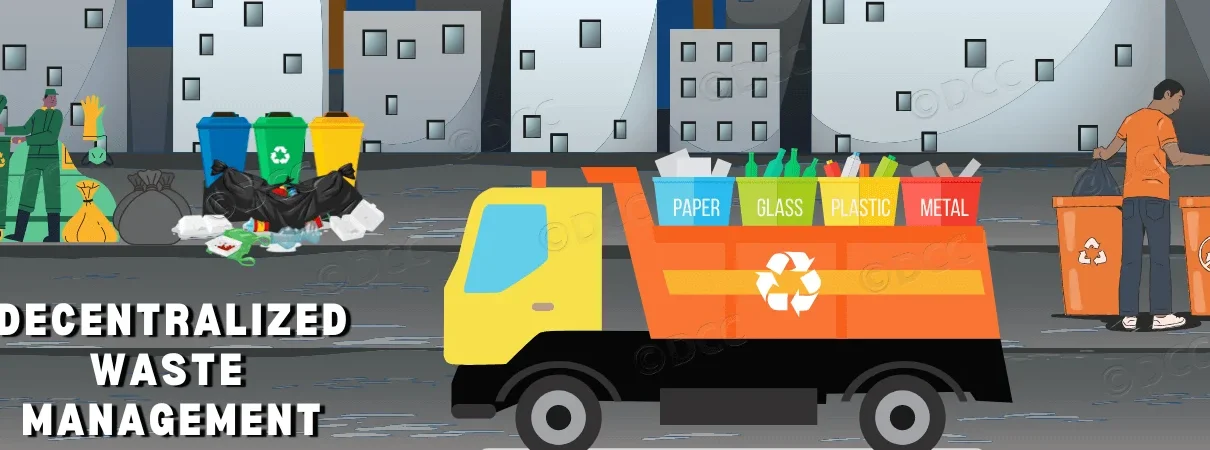In the quest for a cleaner, greener future, Material Recovery Facilities (MRFs) have emerged as a game-changing component in India’s solid waste management ecosystem. As of 2025, with urbanization expanding and waste generation increasing, India faces the urgent need to divert waste from landfills and promote recycling. MRFs in waste management are now central to this mission, enabling efficient sorting, segregation, and redirection of valuable recyclables from the waste stream.
What Is a Material Recovery Facility (MRF)?
A Material Recovery Facility (MRF) is a specialized plant designed to receive, segregate, and process municipal solid waste (MSW). The primary objective of an MRF is to recover valuable materials like plastics, paper, cardboard, metals, and glass while reducing the amount of waste that ends up in landfills. These recovered materials can be sent to recycling units or repurposed for manufacturing new products.
MRFs are of two types—clean MRFs, which deal with already segregated dry waste, and dirty MRFs, which handle mixed waste requiring both mechanical and manual sorting. As waste volumes grow in urban areas, both models are being widely adopted in India, with new facilities being set up under Smart City and Swachh Bharat initiatives.
Driving Zero Waste with MRFs
The concept of Zero Waste Technology is rooted in minimizing waste generation and maximizing resource recovery. MRFs play a vital role in this ecosystem by enabling:
- Efficient Resource Recovery: MRFs are equipped with sorting technologies such as conveyor belts, trommel screens, air classifiers, and optical sorters that identify and separate recyclable materials from mixed waste streams.
- Reduction of Landfill Burden: By recovering up to 30–60% of recyclables from waste, MRFs significantly reduce the load on landfills and mitigate environmental issues like leachate, methane emissions, and land degradation.
- Support for Recycling Industries: MRFs provide a steady supply of sorted, clean recyclables that are essential raw materials for industries like paper, plastic, textile, and construction.
With MRFs becoming integral to urban planning, Zero Waste to Landfill India is making rapid strides toward achieving its goals.
Decentralized Waste Management Technology
A key trend in 2025 is the growing adoption of decentralized waste management technology. Traditional centralized models often fail due to logistical challenges, lack of infrastructure, and delays in waste processing. Decentralized systems solve these issues by placing MRFs closer to waste generation sources—such as residential complexes, commercial areas, and institutional zones.
DCC Group, a leading player in India’s waste management sector, is at the forefront of designing compact, modular MRFs tailored for local use. These decentralized units allow real-time waste segregation, reducing transportation costs, increasing operational efficiency, and enhancing community participation in recycling efforts.
DCC Group’s Contribution to India’s Recycling Mission
As one of India’s trusted names in sustainable waste solutions, DCC Group has been instrumental in deploying cutting-edge MRF systems nationwide. Their solutions integrate advanced screening equipment, AI-based sorting systems, and customized layouts based on city-specific waste characteristics.
DCC’s MRF projects are aligned with the government’s goals under the Smart Cities Mission and Swachh Bharat Abhiyan, helping local municipalities scale up their waste processing capacities. The company’s emphasis on decentralized systems ensures that even Tier 2 and Tier 3 cities can implement MRFs without heavy infrastructure investments.
The Road Ahead
India generates over 62 million tons of waste annually, and recycling only about 20% of it is not sustainable. With the implementation of robust MRF infrastructure, India has the opportunity to raise this number dramatically. In 2025, the synergy between MRFs, zero waste technology, and decentralized waste management technology is not only solving the country’s urban waste crisis but also fueling a circular economy where waste becomes a resource.
Conclusion
Material Recovery Facilities are more than just waste sorting centers—they are the engine driving India’s recycling revolution. By integrating smart, decentralized, and zero waste technologies, MRFs are enabling cities to manage their waste sustainably, reduce environmental footprints, and create value from what was once considered garbage. As MRFs continue to expand across the country, the dream of a Zero Waste India is no longer distant—it’s already in motion, powered by innovation, policy, and organizations like DCC Group.



